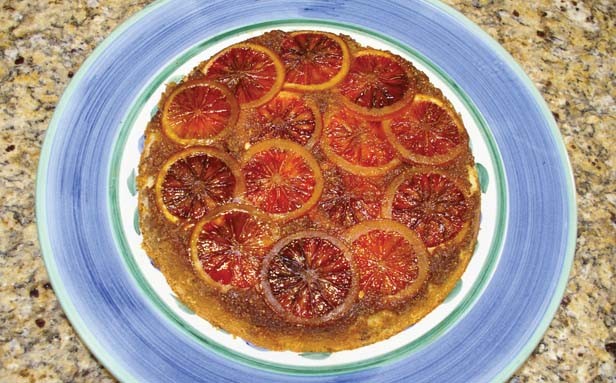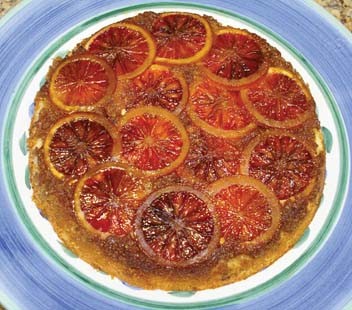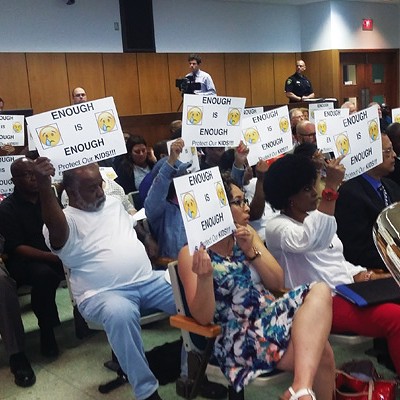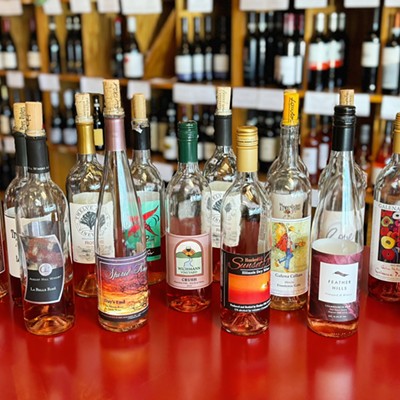
True, the name is a little off-putting. And their exterior, mottled with vermilion and/or brownish purple, sometimes looks more like a nasty bruise rather than something good to eat. But the first sight and taste of blood orange flesh reveal why they’re so highly prized.
Blood oranges are ancient, but they’ve only been grown commercially in the U.S. for the last decade or so. They originated in Asia, but are now predominately found in the Mediterranean, especially in Sicily and Spain where they’ve been cultivated for centuries. Blood oranges are in season from November through May, though they’re not available locally until December or January.
There are three varieties. Moros, most available locally, have the darkest exterior and flesh and are slightly tangier. A box of Moros contains some almost all a purplish-black/orange, some mottled and streaked with dark color, and some looking no different than regular oranges. The insides vary similarly; the darker the peel, the darker the flesh. Tarocco blood oranges from Sicily are sometimes called “half-bloods;” their orange flesh is lightly streaked with red. According to legend Taroccos got their name from the astonished exclamation expression of the farmer who discovered them. Their vitamin C level is the highest of all oranges, probably because they grow in the rich volcanic soil around Mount Etna. In an NPR interview exotic-fruit expert David Karp says they’re “absolutely the finest eating oranges in the Mediterranean.” Taroccos are occasionally available locally labeled “Bella Vita.”
Moros and Taroccos originated from the third variety, Sanguinello (the Spanish word for “blood” is sangre). Its orange flesh is shot through with blood-colored streaks. First encounters with blood oranges can be alarming. Karp tells of a California woman who called police, convinced her neighbor was injecting blood or poison into fruits of the Valencia orange tree she’d had for decades. The mystified police took samples to the University of California Riverside’s Citrus Variety Collection where experts determined that the tree had had a “recapitulation,” a mutation that reenacted blood oranges’ Chinese “birth” thousands of years earlier.
Blood oranges’ “bloodiness” results from anthocyanins, pigmentation compounds responsible for red coloration in cherries and other fruits and vegetables, but found rarely in citrus. Common oranges have only one of two genes necessary to create anthocyanins; blood oranges have both. Antioxidant anthocyanins make blood oranges extra nutritious.
And the taste? A 1646 A.D. Latin text published in Italy, blood oranges’ first appearance in Western literature, called their flavor grapelike. They’ve also been described as having raspberry hints, but neither seems right to me. Their flavor belongs in the orange family, but it’s distinctive, just as tangerines taste orangey yet unique. Most blood oranges don’t actually look like blood — at least not fresh blood. Moro juice is dark salmon color, similar to cranberry-orange juice. Blood oranges can be eaten out of hand, used in preparations from salads and entrées to desserts, or used as a colorfully unusual garnish. They make an especially delicious and beautiful mimosa (Champagne and orange juice).
This unusual sauce originally appeared in Bon Appétit as a glaze for an elaborate tart. The tart was OK, not something I’d make again. But the caramel sauce was fantastic, with the tart/sweet juice and peel marrying perfectly with the caramelized sugar. I’ve found multiple uses for it; it’s become a pantry staple. When blood oranges are in season I make multiple batches which keep, refrigerated, indefinitely. A thin syrup, unlike caramel made with milk or cream, it’s wonderful drizzled over ice cream or pound cake; as a glaze or sauce component for grilled chicken, pork chops or salmon; or to make the vinaigrette to drizzle over asparagus or for salads – especially spinach salads.
Blood-orange caramel sauce
• 1 1/3 c. sugar
• 1/2 c. water
• 1 c. fresh blood-orange juice
• 1 T. grated blood-orange peel (be careful to grate just the peel without any of the bitter white pith)
Combine sugar and water in heavy medium saucepan. Swirl the pan without stirring over medium-low heat until the sugar dissolves. Increase heat to medium high and boil, still without stirring, until the sugar takes on a deep amber color, occasionally swirling the pan, about eight minutes.
Carefully add the juice and peel (mixture will bubble vigorously). Reduce the heat to low and stir until any caramel clumps are completely dissolved. I like the bits of candied peel in the sauce, but strain it if you want it completely smooth. Cool completely and refrigerate. Makes about 1 1/3 cups.
Blood-orange caramel vinaigrette
• 1/4 c. blood-orange caramel
• 2 T. extra-virgin olive oil
• 1 T. wine vinegar, not balsamic, or more or less to taste (sherry vinegar, available locally at Incredibly Delicious, is preferred)
• 1 tsp. minced shallot or onion or 1/2 tsp. minced garlic, optional
• 1 tsp. Dijon mustard
Whisk all ingredients together. Makes about 2/3 cup. (Adapted from a recipe in Bon Appétit, Jan. 2002.)
This is another Bon Appétit adaptation that uses caramelized sugar. It’s beautiful as it is delicious with gleaming wine-colored orange slices and a pleasing bit of crunch and flavor from the polenta. As with all upside-down cakes, it’s best served still warm from the oven.
Blood-orange polenta upside-down cake
• 7 T. plus 3/4 c. sugar, divided
• 3 T. water
• 8 T. unsalted butter, room temperature, divided, plus additional for buttering the skillet’s sides
• Approximately 3 unpeeled blood oranges
• 1 c. unbleached all-purpose flour
• 3 T. polenta or coarse yellow cornmeal (preferably stone-ground)
• 1 1/2 tsp. baking powder, preferably Rumsford or another aluminum-free baking powder
• 1/4 tsp. salt
• 1 tsp. pure vanilla extract
• 2 large eggs at room temperature, yolks and whites separated
• 6 T. whole milk
Preheat the oven to 350 F. Combine 6 tablespoons of the sugar and 3 tablespoons water in 10-inch-diameter ovenproof skillet with at least 2 1/2-inch-high sides. Stir over medium heat until sugar dissolves. Increase heat and boil without stirring, swirling the skillet, until syrup is just golden amber, about 4 minutes. Be careful that the caramel doesn’t get too dark. Remove skillet from heat and whisk 2 tablespoons butter into caramel. Set aside.
Cut off both rounded ends of each orange so that ends are even and flat. Using a sharp serrated knife, cut the oranges into approximately 1/8-inch-thick rounds, removing the seeds. Depending on the size of the oranges, you may need an extra orange. Arrange orange slices in slightly overlapping concentric circles on top of the caramel in the skillet.
Combine the flour, polenta, baking powder and salt. Using an electric mixer, beat 3/4 cup sugar, remaining 6 tablespoons butter, and vanilla in a large bowl until light and fluffy. Add egg yolks 1 at a time, beating well after each addition. Add flour mixture in 3 additions alternately with milk in 2 additions, beating batter just until incorporated.
Using clean dry beaters in a large clean, grease-free bowl, beat egg whites until soft peaks form. Add remaining 1 tablespoon sugar and beat until stiff but not dry. Fold 1/3 of egg whites into batter to lighten, then gently fold in remaining egg whites in 2 additions. Lightly butter the sides of the skillet, then gently spread the batter evenly over the orange slices.
Bake about 45 minutes, or until a tester inserted into the cake’s center comes out clean. Cool cake in skillet 10 minutes. Run a knife around the cake’s perimeter. Place platter atop skillet. Using oven mitts, hold platter and skillet firmly together and invert, allowing cake to settle onto platter. Rearrange any orange slices that may have become dislodged. Serve slightly warm or at room temperature. Garnish each serving, if desired, with lightly sweetened whipped cream or a small scoop of vanilla, chocolate or coffee ice cream. Makes one 10-inch cake.
Contact Julianne Glatz at [email protected].



















